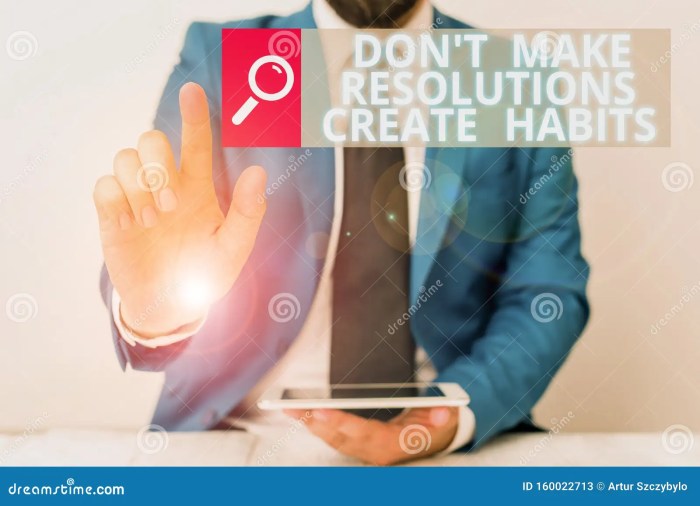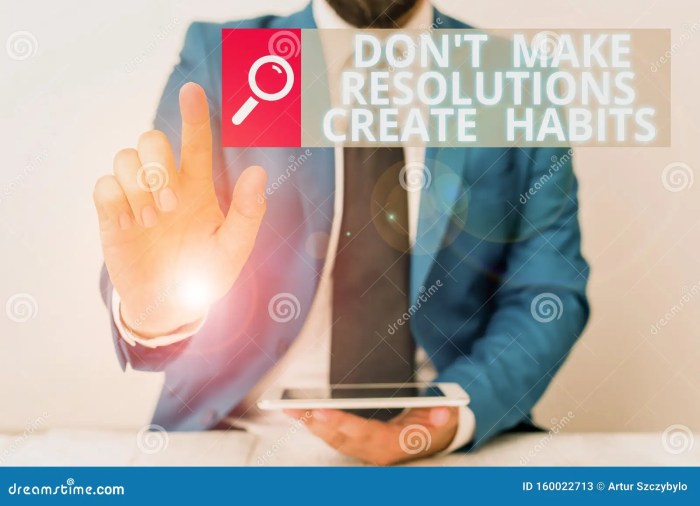Taurus Man Virgo Woman: A fascinating astrological pairing, this combination promises both passionate connection and practical harmony. Will their grounded nature and meticulous attention to detail create a strong foundation? Or will clashes in communication and emotional expression lead to friction? This deep dive explores the strengths, weaknesses, and potential challenges within this unique union, examining how their different astrological traits shape their interactions, from daily routines to long-term goals.
We’ll explore their communication styles, values, and emotional expression, uncovering potential areas of conflict and harmony. Prepare to uncover insights into navigating the complexities of this relationship, drawing on astrological principles to uncover strategies for building a lasting bond. We’ll also delve into practical considerations, such as finances and shared responsibilities, offering tangible tips for success.
Compatibility Overview
Taurus men and Virgo women, while seemingly disparate, can form a surprisingly harmonious partnership. Taurus’ grounded nature and Virgo’s analytical approach, though different, can complement each other effectively. This pairing, when navigated with understanding, offers the potential for a long-lasting and fulfilling relationship. However, inherent differences can lead to challenges if not addressed proactively.Astrological interpretations often depict Taurus men as sensual, practical, and appreciative of comfort.
Virgo women, conversely, are known for their meticulous nature, attention to detail, and desire for order. These seemingly contrasting traits can create a dynamic relationship where one partner provides stability and the other offers intellectual stimulation. However, navigating the differences in communication styles and emotional expression becomes crucial for success.
Strengths of the Pairing
Taurus men’s inherent stability and practicality often provide a solid foundation for the relationship. Their appreciation for comfort and material things can be a source of shared enjoyment and contentment. Virgo women, with their meticulousness and organizational skills, can bring structure and efficiency to the partnership, complementing the Taurus man’s sometimes more relaxed approach. This balance can foster a harmonious blend of practicality and refinement.
Weaknesses of the Pairing
Taurus men’s tendency towards stubbornness and resistance to change can clash with Virgo women’s desire for order and efficiency. Virgo women’s critical nature and meticulousness, while beneficial in many aspects, might be perceived by Taurus men as overly judgmental. This difference in approach to life can create friction if not managed effectively. Misunderstandings can arise due to contrasting communication styles and differing emotional expression preferences.
Potential Conflicts and Harmonies
Potential conflicts might stem from the Taurus man’s sometimes slower pace of life versus the Virgo woman’s preference for order and efficiency. Taurus men may struggle to adapt to the Virgo woman’s meticulousness, while Virgo women might find the Taurus man’s more relaxed approach frustrating. Harmonious interactions can arise from mutual respect for each other’s strengths. Open communication, recognizing each other’s needs, and a willingness to compromise can mitigate potential conflicts and nurture a strong bond.
Impact on Communication and Emotional Expression
Taurus men, often expressing emotions indirectly, may find it challenging to communicate their feelings clearly. Virgo women, with their analytical nature, might interpret these indirect expressions differently, leading to misunderstandings. Open and honest communication, along with an effort to understand each other’s emotional language, is crucial for successful communication. A conscious effort to express feelings and understand different communication styles can foster deeper emotional connection.
Compatibility Summary Table
| Strengths | Weaknesses | Conflicts | Harmonies |
|---|---|---|---|
| Taurus man’s stability and practicality; Virgo woman’s organization and efficiency; Shared appreciation for comfort. | Taurus man’s stubbornness; Virgo woman’s critical nature; Differences in communication styles. | Disagreements on pace of life; Difficulty in understanding each other’s emotional expression; Potential for misinterpretations. | Mutual respect for strengths; Ability to complement each other; Shared values; Willingness to compromise. |
Communication Styles
Taurus men and Virgo women, while seemingly disparate, can form a strong bond if they understand and adapt to each other’s communication styles. Taurus men, grounded and practical, often express themselves through actions and tangible results. Virgo women, analytical and detail-oriented, tend to communicate through precise words and careful consideration. These differences can lead to misinterpretations if not approached with awareness and respect.Understanding these communication nuances is crucial for effective conflict resolution and maintaining a harmonious relationship.
The key lies in acknowledging the inherent strengths of each partner’s communication style, and finding common ground in their expression. This understanding fosters empathy and helps them bridge the gap between their approaches.
Taurus Man Communication Style
Taurus men, ruled by the earth element, are often considered grounded and practical. Their communication style is frequently expressed through actions, rather than extensive verbal exchanges. They appreciate concrete results and tangible demonstrations of affection. Nonverbal cues, such as gestures and expressions of physical closeness, often hold more weight than spoken words. Patience and a willingness to listen attentively are key to understanding their perspectives.
Virgo Woman Communication Style
Virgo women, also grounded, but with an air of meticulousness, typically communicate through detailed explanations and precise words. Their communication style is characterized by careful consideration and a desire for clarity. Virgo women often focus on the specifics of a situation, providing a detailed analysis that others may find insightful. They are excellent listeners, but also prefer their words to be clear and well-articulated.
Potential Communication Challenges
Taurus men, valuing tangible results, may find Virgo women’s detailed explanations overly verbose. Conversely, Virgo women might perceive Taurus men’s reliance on actions as a lack of emotional depth or consideration. Misunderstandings can arise from these contrasting communication styles, as one partner may not fully grasp the other’s intentions or needs. Conflicts can stem from a perceived lack of attention to detail or a feeling that one partner is not actively listening.
Conflict Resolution Strategies
Open and honest communication, coupled with active listening, is crucial. Taurus men should strive to articulate their needs and feelings in a clear and concise manner. Virgo women, in turn, should be patient and mindful of the Taurus man’s tendency to express himself through actions rather than words. Both partners must be willing to compromise and find common ground in their communication styles.
Effective Communication Strategies
Taurus men should actively seek to understand the Virgo woman’s perspective through detailed questioning and active listening. Virgo women should try to communicate their needs and feelings with tangible examples and a more concise approach, avoiding excessive detail. A willingness to express emotions and understand the other’s emotional language can significantly improve their communication.
| Taurus Man (Verbal/Nonverbal) | Virgo Woman (Verbal/Nonverbal) | Potential Misunderstandings | Strategies for Improvement |
|---|---|---|---|
| Actions, physical displays, direct, concise | Detailed explanations, precise words, analytical, attentive | Taurus man may find Virgo woman’s explanations too lengthy; Virgo woman may perceive Taurus man’s actions as insufficient communication. | Taurus man: Summarize needs, ask clarifying questions. Virgo woman: Be mindful of Taurus man’s need for tangible expressions; express emotions with clear examples. |
Values and Priorities
Taurus men and Virgo women, while seemingly disparate, can find common ground in their deeply rooted values. Understanding these fundamental principles is crucial to navigating potential conflicts and appreciating the unique strengths each brings to a relationship. Astrological interpretations offer insight into the core desires and motivations that shape their individual approaches to life.Taurus men, often grounded and practical, are frequently associated with a strong appreciation for material comforts and stability.
Virgo women, with their analytical nature and meticulous attention to detail, often prioritize order, efficiency, and personal growth. These contrasting, yet complementary, value systems can lead to both harmonious cooperation and areas of potential friction. Recognizing these nuances is key to fostering a relationship built on mutual understanding and respect.
Taurus Man Values
Taurus men, guided by the Earth sign’s inherent practicality, often prioritize stability, security, and comfort. They value tangible assets, quality craftsmanship, and the comforts of a well-ordered life. Their strong sense of routine and established patterns contributes to their desire for long-term, sustainable relationships. They appreciate the finer things in life, valuing aesthetics and enjoying material possessions.
A secure financial future is often a top priority for them.
Taurus men and Virgo women can sometimes be a fascinating blend of grounded practicality and meticulous attention to detail. They might find common ground in a shared love for the finer things in life, but their harmonious compatibility can also be enhanced by embracing the joy of expressing themselves creatively, like learning to sing and dance at the same time.
This kind of shared experience, as explored in the insightful article Sing and Dance at the Same Time , could bring a new dimension to their relationship, fostering a deeper connection and mutual appreciation for each other’s unique talents and personalities. Ultimately, this dynamic duo can flourish by embracing shared passions.
Virgo Woman Values
Virgo women, with their detailed nature and intellectual curiosity, often value efficiency, order, and personal growth. Their meticulous approach to tasks and their appreciation for organization are often hallmarks of their personality. They strive for excellence in their endeavors and prioritize their well-being, often engaging in self-care and personal development. Their analytical mindset often leads them to assess situations carefully, seeking clarity and efficiency in all aspects of life.
Areas of Alignment
Both Taurus men and Virgo women value hard work, dedication, and the pursuit of long-term goals. They both appreciate a comfortable, stable environment, which may include financial security. They value quality, and their attention to detail often aligns in areas like home decor, or in selecting high-quality products. Their commitment to stability and structure provides a foundation for a strong, lasting relationship.
This shared appreciation for hard work and long-term planning is often a strong foundation for a shared future.
Potential Conflicts
While sharing a commitment to stability, their approaches to achieving it may differ. Taurus men may value a more traditional, established approach, while Virgo women might favor a more methodical and analytical path. Taurus men’s appreciation for tangible comforts might sometimes clash with Virgo women’s emphasis on efficiency, leading to discussions on financial planning or household management. Their different approaches to problem-solving can create situations where their analytical natures lead to differing viewpoints.
| Taurus Men | Virgo Women | Areas of Alignment | Potential Conflicts |
|---|---|---|---|
| Stability, security, comfort, material possessions | Efficiency, order, personal growth, analytical thinking | Commitment to hard work, long-term goals, appreciation for quality, stability | Different approaches to achieving stability, potential clashes on financial planning or household management, differing problem-solving styles. |
Emotional Expression

Taurus men and Virgo women, while seemingly disparate in their approach to life, can form a powerful connection if they understand and appreciate each other’s emotional expression styles. Understanding these nuances can pave the way for deeper intimacy and stronger trust. Their astrological influences shape their emotional landscapes, often leading to potential misunderstandings. However, with awareness and effective communication strategies, these differences can be transformed into sources of strength and shared understanding.Taurus men, grounded and sensual, often express emotions through tangible actions and physical affection.
Virgo women, analytical and detail-oriented, may favor a more introspective and communicative approach. This difference in preference can sometimes lead to misinterpretations if one partner isn’t aware of the other’s emotional language. Learning to bridge this gap is crucial for a fulfilling relationship.
Taurus Man Emotional Expression
Taurus men, ruled by the earth element, are known for their grounded and sensual nature. They tend to express their emotions through tangible actions, such as providing for their loved ones, offering practical support, or demonstrating affection through gestures. Physical touch, like holding hands or cuddling, is frequently a significant way they express care and affection. They may also show their emotions through creating comfortable and nurturing environments.
Their emotional depth often lies in their commitment to long-term relationships and their capacity for providing stability and security.
Virgo Woman Emotional Expression
Virgo women, also ruled by the earth element, often approach emotional expression with a meticulous and analytical mind. They may express their emotions through thoughtful words, practical help, and insightful observations. They might offer helpful advice or demonstrate care through acts of service. While they value emotional connection, their expression is often nuanced and may require careful observation.
Their focus on detail and perfectionism can sometimes lead to a more reserved or introspective approach to expressing emotions.
Potential Misunderstandings
A key potential misunderstanding arises from the different approaches to emotional expression. A Taurus man might perceive a Virgo woman’s reserved demeanor as aloofness, while a Virgo woman might view a Taurus man’s outwardly affectionate gestures as overly demonstrative or even insincere. These perceived differences can lead to feelings of frustration and a sense of disconnect if not addressed openly and honestly.
Impact on Intimacy and Trust
Misunderstandings about emotional expression can directly impact intimacy and trust. If these differences aren’t recognized and addressed, the partners may feel unheard or unappreciated. This can lead to a lack of emotional connection, hindering the development of a deep and meaningful bond. Open communication and active listening are essential to bridge the gap and foster a stronger sense of trust.
Strategies for Improving Emotional Understanding
Open communication is key. Taurus men and Virgo women need to actively listen to each other, validating feelings and acknowledging different expression styles. Taurus men should be mindful of the need for emotional space for Virgo women, while Virgo women should be more direct in expressing their own needs and feelings. Learning to communicate their needs and feelings clearly and openly can lead to a stronger and more fulfilling relationship.
Emotional Expression Styles Table
| Emotional Expression Style | Taurus Man | Virgo Woman | Common Misinterpretations | Strategies for Understanding |
|---|---|---|---|---|
| Tactics | Tangible actions, physical affection, creating nurturing environments. | Thoughtful words, practical help, insightful observations. | Reserved demeanor as aloofness; outwardly affectionate gestures as insincere. | Active listening, validation of feelings, acknowledging different expression styles. |
| Values | Commitment, stability, security. | Detail, perfectionism, emotional support. | Taurus man’s lack of verbal expression; Virgo woman’s meticulous approach as coldness. | Direct communication of needs and feelings, learning to communicate needs effectively. |
| Needs | Recognition of efforts, physical affection, practical support. | Understanding, validation, thoughtful gestures. | Taurus man’s needs not met; Virgo woman’s needs misinterpreted. | Expressing needs clearly and openly, creating space for each other’s emotional needs. |
Relationship Dynamics
Taurus men and Virgo women, a pairing often described as a strong, grounded connection, bring unique strengths and challenges to their relationship. Their combined earth and earth signs create a foundation built on practicality and a shared desire for stability. However, their differing approaches to emotions and communication can sometimes create friction. Understanding these dynamics is key to navigating the relationship successfully.This pairing’s relationship dynamics are influenced by the interplay of their astrological traits.
Taurus men, with their grounded nature and appreciation for material comforts, often seek stability and security in a partner. Virgo women, known for their analytical and detail-oriented approach, prioritize order and efficiency in their lives, including their relationships. This combination can lead to a harmonious balance, but also requires careful attention to communication and conflict resolution.
Typical Relationship Dynamics
Taurus men often find Virgo women’s meticulous nature reassuring and appreciate their practicality. Conversely, Virgo women are drawn to Taurus men’s dependability and ability to create a comfortable and secure environment. Their shared appreciation for structure and stability can form a solid foundation for a lasting relationship. However, potential differences in communication styles and emotional expression need careful consideration.
Potential Power Imbalances
While the pairing is often harmonious, potential power imbalances can arise. Virgo women, with their analytical nature, may tend towards a more critical approach, which, if not carefully managed, could lead to feelings of insecurity or pressure for the Taurus man. Conversely, a Taurus man, sometimes more focused on material comfort, may not fully appreciate the Virgo woman’s intellectual and analytical needs, leading to potential frustration.
Open communication and mutual understanding are crucial in preventing this imbalance.
Shared Responsibilities and Household Tasks
Taurus men and Virgo women, both grounded and practical, often approach shared responsibilities and household tasks with efficiency and a desire for order. Their shared appreciation for a well-maintained and organized environment makes collaboration on these matters relatively easy. A clear division of tasks based on individual strengths and preferences is beneficial.
Strategies for Navigating Relationship Challenges
Addressing communication differences is key. Taurus men may be more direct, while Virgo women may prefer indirect communication. Understanding and respecting these different styles is crucial for effective communication. Creating opportunities for shared leisure activities can strengthen the emotional connection and help bridge the gap between their different approaches to emotional expression. Establishing clear expectations regarding finances and household responsibilities early on can prevent misunderstandings.
Taurus men and Virgo women can make a fascinating pairing, often characterized by a grounded, practical approach to life. Their shared appreciation for comfort and stability often leads to a strong connection. However, sometimes a desire for more excitement and a need for change, like the recent news about Beyonce and Adidas shutting down their Ivy Park clothing brand, beyonce and adidas shutter ivy park clothing brand , can create tension.
Ultimately, understanding these potential differences and adapting to each other’s needs is key to their success.
Common Relationship Dynamics Summary
| Aspect | Communication | Conflict Resolution | Shared Responsibilities | Power Dynamics |
|---|---|---|---|---|
| Taurus Man | Direct, often focused on practical matters. | May tend to avoid conflict, preferring to find solutions quietly. | Likely to be the primary provider, valuing stability. | May be more comfortable with a structured and secure dynamic. |
| Virgo Woman | Indirect, detail-oriented, analytical. | Prefers logical solutions, seeks fairness and understanding. | Likely to be organized and detail-oriented, valuing efficiency. | May be more critical and analytical, potentially requiring clear communication. |
| Overall Dynamics | Requires active listening and understanding different communication styles. | Finding mutually acceptable solutions, prioritizing respect and understanding. | Clear division of labor based on strengths, ensuring shared expectations are clear. | Open communication, recognizing and respecting individual needs. |
Daily Life and Activities: Taurus Man Virgo Woman

Taurus men and Virgo women, while seemingly disparate, can find harmony in their daily lives. Understanding their differing approaches to routine, interests, and leisure activities is key to navigating potential conflicts and forging shared experiences. Taurus men, grounded and sensual, often prioritize comfort and pleasure, while Virgo women, detail-oriented and practical, focus on efficiency and organization. These differing priorities can create friction, but with conscious effort, they can be transformed into complementary strengths.
Taurus men and Virgo women can be a pretty solid match, often finding harmony in their practical approaches to life. They both appreciate a comfortable routine, which is why the concept of “making a bed in your car” ( Make a Bed in Your Car ) resonates with their grounded nature. Ultimately, their shared appreciation for comfort and stability often makes for a long-lasting relationship.
Routine and Interests
Taurus men often gravitate toward predictable routines and familiar environments. They appreciate the comfort of established habits and routines. Virgo women, on the other hand, often seek structure and efficiency in their daily lives. They value organization and order in their routines and activities. These differences can lead to disagreements over the pace of life, the need for structure, and the balance between routine and spontaneity.
Leisure Activities, Taurus Man Virgo Woman
Taurus men often enjoy relaxing pastimes, such as cooking, gardening, or indulging in fine dining. They appreciate the sensory experience of savoring good food, music, and company. Virgo women, conversely, often prefer activities that offer mental stimulation and opportunities for self-improvement. They might enjoy reading, learning new skills, or engaging in creative pursuits.
Potential Conflicts
Disagreements can arise from differences in preferences for relaxation versus productivity. A Taurus man might find a Virgo woman’s desire for constant organization stifling, while a Virgo woman might perceive a Taurus man’s laid-back approach as disorganized. Different ideas on how to spend free time, such as spontaneous outings versus planned events, could also lead to disagreements.
Shared Interests and Experiences
Despite these differences, shared interests can be found. A Taurus man’s appreciation for good food can complement a Virgo woman’s love for planning and executing culinary experiences. They could enjoy cooking together, exploring local markets, or even creating a beautiful garden together. A focus on shared goals, whether it’s creating a home, pursuing a hobby, or learning a new skill, can bridge the gap.
Strategies for Balance
Open communication and compromise are crucial. Taurus men should be receptive to Virgo women’s desire for structure, while Virgo women should appreciate Taurus men’s need for relaxation. Scheduling time for both individual pursuits and shared activities is key to maintaining a balanced lifestyle. Recognizing and respecting each other’s needs and preferences will help to build a stronger and more harmonious relationship.
Daily Activities and Balance Strategies
| Typical Daily Activities | Shared Interests | Potential Conflicts | Strategies for Balance |
|---|---|---|---|
| Taurus Man: Relaxing, enjoying comfort, focusing on pleasure | Virgo Woman: Planning, organizing, efficient use of time | Taurus Man: Feeling stifled by Virgo Woman’s structure; Virgo Woman: Frustration with Taurus Man’s lack of structure | Compromise on schedules, allowing flexibility while maintaining structure. Scheduling time for individual pursuits and shared activities. |
| Taurus Man: Cooking, gardening, enjoying fine dining | Virgo Woman: Learning new recipes, planning meals, creating beautiful settings | Taurus Man: Dislike of strict schedules or over-planning; Virgo Woman: Discomfort with spontaneous plans | Combining relaxation and structure in cooking and dining; planning outings but allowing flexibility. |
| Taurus Man: Social gatherings with friends | Virgo Woman: Organizing social events, creating a welcoming atmosphere | Taurus Man: Feeling rushed or pressured by Virgo Woman’s need for organization; Virgo Woman: Disappointment with Taurus Man’s less structured approach | Balancing social gatherings with planned events; mutual understanding of preferences for structure and spontaneity. |
Practical Considerations
Taurus men and Virgo women, with their grounded natures, often face practical considerations that require careful planning and communication. Their shared values for stability and order can be a powerful asset, but understanding potential differences in approach is crucial for a harmonious relationship. Effective communication and a willingness to compromise are essential for navigating these practical aspects successfully.Practical considerations in a relationship often revolve around shared responsibilities, financial management, household routines, and travel plans.
A thoughtful approach to these matters can strengthen the bond between a Taurus man and a Virgo woman, while miscommunication can lead to friction.
Financial Management
Financial stability is a significant concern for both Taurus men and Virgo women. A Taurus man, valuing security and material comfort, may have a more traditional approach to finances, often preferring a structured savings plan. A Virgo woman, known for her meticulousness and practicality, will likely excel in budgeting and financial planning. Understanding each other’s approaches and finding common ground is essential.
Open communication about financial goals, spending habits, and joint accounts can help avoid potential conflicts.
Home Life
Taurus men and Virgo women often share a deep appreciation for a comfortable and organized home environment. A Taurus man’s love for a cozy and aesthetically pleasing home will often clash with the Virgo woman’s preference for a clean and functional space. This can lead to conflicts regarding organization and upkeep. A shared understanding of each other’s preferences and a willingness to compromise on design elements and cleaning schedules can minimize potential issues.
Travel Planning
Travel planning can be a source of friction if not approached thoughtfully. A Taurus man, with his love for comfort and relaxation, may prefer well-planned and luxurious getaways. A Virgo woman, valuing efficiency and meticulous preparation, may prefer organized itineraries. A shared understanding of each other’s preferences and a willingness to find a middle ground can lead to enjoyable travel experiences.
Table: Practical Considerations in a Taurus-Virgo Relationship
| Practical Consideration | Potential Conflicts | Solutions | Communication Strategies |
|---|---|---|---|
| Finances | Disagreement on spending habits, differing investment approaches | Create a joint budget, discuss financial goals, establish clear spending limits, utilize a shared online banking system. | Active listening, expressing concerns without judgment, seeking compromise, setting realistic expectations. |
| Home Life | Disagreements on décor, cleanliness standards, or household chores. | Establish a chore chart, create a shared cleaning schedule, discuss design preferences, compromise on aesthetic choices. | Empathetic listening, respecting each other’s opinions, offering solutions rather than criticism, utilizing a collaborative approach to problem-solving. |
| Travel | Differing preferences on travel style, budget constraints, or itinerary organization. | Compromise on travel destinations, allocate a budget for the trip, collaborate on itinerary creation, incorporate flexibility in the plan. | Open communication, exploring options together, discussing expectations and concerns beforehand, setting realistic expectations for the trip. |
Final Conclusion
Ultimately, the success of a Taurus Man Virgo Woman relationship hinges on understanding and respecting each other’s needs. By acknowledging their contrasting strengths and weaknesses, this pairing can overcome potential obstacles and forge a deep, fulfilling connection. This exploration offers valuable insights into fostering mutual understanding and navigating the unique dynamics that arise within this compelling combination.






















